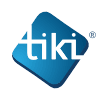Sorry but there seems to be a problem connecting to the system's database.
This may only be a temporary problem, so please wait a while and click retry to try again and go back to the home page.
If it persists you should contact the system administrator.
